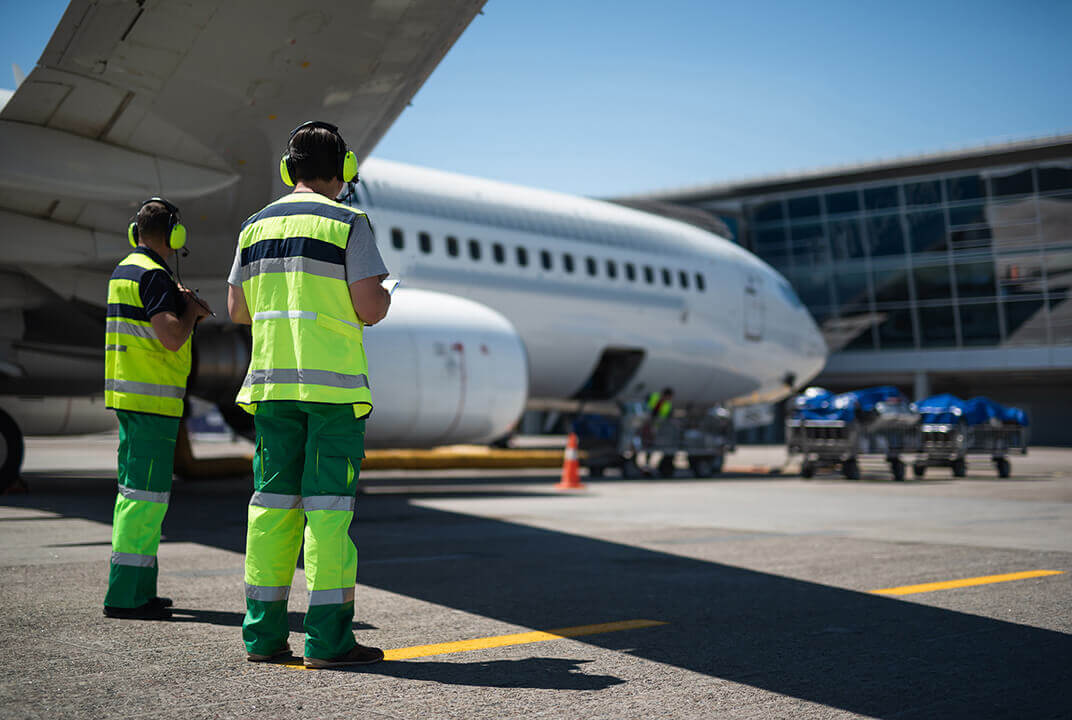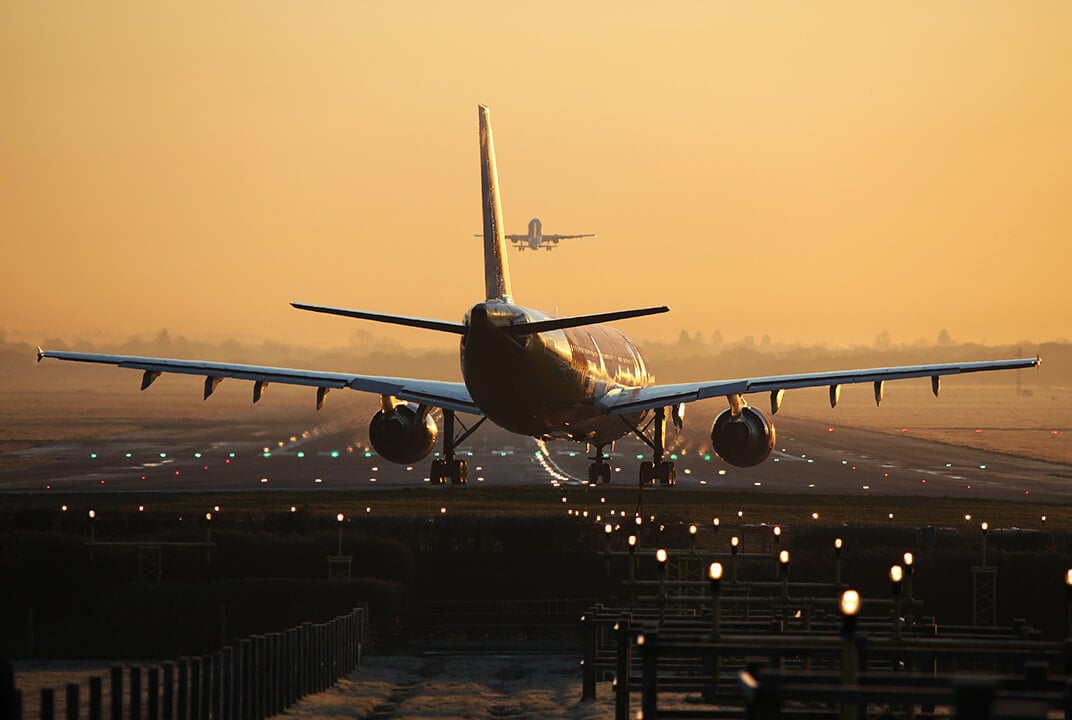Insight | Iris – a step change for aviation and the environment
Iris – a step change for aviation and the environment
Aviation
Europe is taking the lead on climate action. Transforming the overburdened infrastructure of European airspace through digitalisation is one way of achieving this. Inmarsat’s pioneering Iris programme is a key enabler of this green initiative.
No matter where you sit on the political spectrum, there is no argument that climate change has taken centre stage on the mainstream news agenda.
Recent events – from catastrophic bushfires in Australia, severe flooding in the UK and cyclones in Africa to unprecedented water shortages in India have ensured that mitigating the effects of climate change, and ultimately reversing them, is one of the most pressing issues of our time.
Like any other industry, aviation has a role to play in working to reduce carbon emissions that are a key component of climate change. The European Commission acknowledges “that direct emissions from aviation account for about 3% of the EU’s total greenhouse emissions and more than 2% of global emissions”, also noting that if aviation were a country, “it would rank in the top 10 emitters”.
Aviation’s options
Reducing aviation’s contribution to climate change isn’t without its own unique set of challenges though – especially in Europe. Before the Covid-19 crisis, the industry continued to expand. Flights across Europe are set to double in the next 20 years, and this is happening in an already congested airspace.
By 2035, approximately 1.5bn passengers will pass through Europe’s airports. And as more people want to fly – since aviation is a critical driver for European integration and economic prosperity – the inefficiencies in Europe's fragmented airspace bring extra costs of close to €5bn each year to airlines and their customers.
Moreover, the Single European Sky ATM Research (SESAR) programme estimates that 5-10% of CO2 emissions generated by flights are caused by outdated aviation infrastructure. Consequently, this causes unnecessarily long flight trajectories and congestion.
Taken together, these factors are estimated to add an average of 29 miles to each European flight. This forces aircraft to burn more fuel, generate more emissions, pay more in costly user charges and suffer greater delays. Not to mention detracting from passenger experience.
What are the solutions? Removing airlines’ tax exemption on jet fuel has been mooted. However, while increased tax revenue would benefit the treasury, IATA has noted there is no guarantee this will find its way to any environmental proposals. And while electric aircraft and utilising biofuels are rightly lauded as ways of achieving a zero-emission flight, these aren’t remedies in the immediate future.
The quest for digitalisation
The modernisation of air traffic management (ATM) is a near-term solution, especially compared to other long term ideas. Making Europe’s airspace more efficient will alleviate many of the issues caused by the current obsolete infrastructure. And according to Joseph Teixeira, Inmarsat Aviation’s Vice President for Safety and Cybersecurity, within the industry there is broad consensus that this is the most opportune path.
“The automation, this so-called digitalisation, of ATM is a real opportunity for aviation to reduce climate change,” he explains. “By bringing aircraft closer together – in effect doubling and tripling the number of aeroplanes that can be in the same airspace – you can reduce delays and prevent the wasted fuel of planes just circling waiting to land.”
Within Europe there are a number of initiatives aimed at modernising the continent’s ATM led by the European Commission’s aforementioned SESAR project. The Iris programme, Inmarsat’s partnership with the European Space Agency (ESA), is an integral component of this modernisation and digitalisation. Powered by SB-S, Inmarsat’s secure global IP broadband platform for the cockpit, Iris is a satellite-based communication data link solution that will relieve the pressure on ground-based radio frequencies. To date, more than 30 companies have participated in Iris’ design and development – it’s truly a programme of industry-wide commitment and interest.
Work on Iris began in 2014, when ESA selected Inmarsat to lead a consortium of European technology companies to develop the programme. After five years of research and preparation, Inmarsat achieved several important milestones in 2019, including commencing the Implementation Phase, signing Air Navigation Service Providers, and conducting successful commercial flight trials.
The secure satellite data link delivers high-speed bandwidth for real-time communication, allowing aircraft, and their predicted trajectories, to be pinpointed in four dimensions - latitude, longitude, altitude and time - for more precise and efficient flight operations. It will also alleviate pressure on ground-based radio frequencies currently used for ATM communications, which will be under significant capacity stress in the next 5-10 years.
With features like VPN, data segregation and security gateways, Iris delivers unprecedented security for the digital age. It’s also a programme that will expand far into the future, as Inmarsat’s upcoming I-6 satellite fleet will support a new generation of capabilities and advanced global safety services, including Iris.
“There is an impetus, particularly with this Presidency of the European Commission, to digitise Europe’s airspace,” Teixeira says. “That is, increase the automation and as a result improve the environment. And Iris is in that sweet spot. Our Iris data link communications help this digitalisation. We are connected to the avionics system; we can help the aircraft communicate better with the ground and vice versa. That’s why we’re calling for operators and regulators to work together to fast track Iris funding and regulations. ”
Coming closer together
So how will Iris allow aircraft to be brought closer together? As Teixeira explains, it’s all about 4D trajectory technology. Very precise position data is transmitted from the aircraft to Air Traffic Control, which is then compared with the original flight plan. Any deviations are identified much more quickly than before and the necessary adjustments can be made.
“4D technology is concerned with where the plane is going to be in a second, two seconds, a minute, two minutes,” he explains. “So I can predict where I’m going to be and if all of that is digital, because everyone has that information, then I can identify conflicts much earlier and the system can even deconflict those trajectories by giving small adjustments to each of the aircraft. In terms of decreasing congestion, that is the solution. It keeps pilots smarter.”
In 2017, the actual trajectories flown by all European flights emitted an additional 5.8% CO2 emissions more than the optimum flight path. An efficient ATM system will contribute to reducing aviation emissions by providing the flexibility for aircraft to safely fly environmentally optimised trajectories. Iris provides the communications
bandwidth to take more direct routes, which will play a part in reducing the environmental impact of aviation as Europe’s skies continue to get busier.
These procedures will provide €6bn of fuel savings and 18m tonnes of CO2 emissions savings every year. It’s little wonder then that Teixeira states that “for the environment, 4D is the killer app.”
Perfecting the flight path
Of course, there remains the elephant in the room – the Covid-19 pandemic. While we’ve seen an economic downturn, Iris is one technology that is sure to help us rebound. The project will support a more competitive EU aviation industry globally, and make significant contributions to EU Gross Domestic Profit and job creation. Until February 2020 – when events outside aviation’s control took over – Iris was continuing apace. Where possible, the technical implementation of the programme continues. Airbus will conduct certification flights in 2020 and critical operational data will be collected. In order for these flights to occur, the end-to-end system will need to be fully functioning and integrated within Inmarsat and distribution partner networks.
So as the aviation industry battles to get through this challenging event, Teixeira is quick to stress that the fundamentals of the Iris programme – the needed ATC modernisation and digitalisation as well as the need for secure broadband to the cockpit -– haven’t gone away.
“Before this crisis there was every indication that this need for digitalisation was increasingly perceived by senior EU officials as urgent. And the bottom line is that when we return, all the benefits of Iris – providing the communications capability that will allow more effective use of European airspace, that will allow 4D trajectory operations, that will bring satcom on to the aeroplane with the bandwidth to support operational data and applications that further optimise the use of the aeroplane – will still be there,” says Teixeira.
“The need for carbon reductions, the need to support more aircraft in the European airspace, the increasing congestion of the VHF network, all of those things are coming back. They’re not going away. The essential underlying business, economic and environmental drivers of Iris are still there.”
Iris enables all of this. The European Green Deal – of which SESAR’s masterplan is a vital factor – aims to ambitiously transform the continent into a low-carbon economy, including the goal of 10 percent CO2 reduction by 2035 by reducing fuel burn. This, and the benefits to passengers, cannot be achieved without the Iris programme. Iris isn’t just about perfecting the optimum flight path. It’s a step change for aviation as we know it.
Aviation’s drive towards greater sustainability was one of the key topics covered at our FlightPlan online broadcast. Industry experts examined the relationship between aviation and the environment, the challenges aviation faces and how the Iris programme can ease the burden on airlines. Click here to watch the segment on demand for free.


